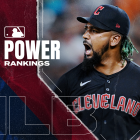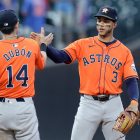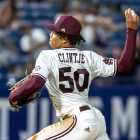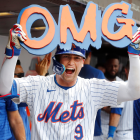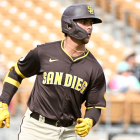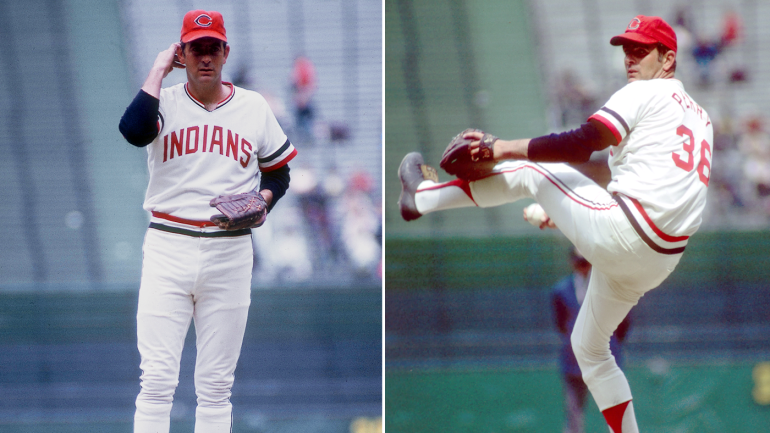
The MLB discourse of late has been dominated by the use of foreign substances by pitchers.
For the uninitiated, pitchers increasingly seem to be using various concoctions to improve their grip on the baseball and by extension ramp up the spin rate on their pitches. While the current strikeout scourge isn't reducible to one factor, the rising dominance of pitchers surely plays a leading role. Likewise, the sensible working assumption is that the use of grip-improving substances is contributing to said dominance.
Partly in response to growing public outcry, MLB -- after decades upon decades of looking the other way -- recently decided to enact mid-season preventive measures and penalties for the use of foreign substances by pitchers.
While it remains to be seen what difference the anti-foreign substance movement makes when it comes to restoring some balance to the pitcher-hitter dynamic in the game right now, the topic isn't going away. As such, perhaps it's time for a brief walking tour of the history of foreign substances as a pitcher's aid? Yes, it is time. Let us do that right now.
So what's a foreign substance? The working definition we'll use is anything applied to the baseball that doesn't belong there and that alters the behavior of the ball. We won't get into the use of emery boards and sandpaper, which can be used to scuff the baseball and thus increase movement. While that practice is similarly scandalous -- meaning that it ranges from modestly scandalous to not particularly scandalous at all -- it's more an act of defacement as opposed to supplementation via goo.
Yes, we're considering human saliva to be a foreign substance. Semanticists of certain persuasions might argue that bodily fluids -- the urine of Rich Hill and or Moises Alou, for instance -- are not "foreign" when wielded to the benefit of the humans whence they were sourced. However, it says here that if it doesn't belong on the baseball, then it's a foreign substance. Speaking of which …
It all starts with the spitball
It is what it sounds like -- the pitcher puts spit upon the baseball. Like most things we'd probably never think of trying, its origins appear to be serendipitous in nature. Steven V. Rice of the Society for American Baseball Research writes of the Class A Eastern League of 1902:
"Meanwhile, pitcher Frank Corridon of the Providence Grays made an accidental discovery: If you throw a baseball with wet fingertips and a dry thumb, so that the fingertips slip from the ball as you release it, the ball will travel straight for a distance and then sink abruptly. Such a throw is difficult to control."
If Corridon was the author of the spitter, then Elmer Stricklett may have been its leading evangelist. The diminutive right-hander had a fairly middling big-league career across parts of four seasons with the White Sox and Brooklyn Superbas, but in the early 1900s he bent the arc of baseball history. Future Hall of Famer Jack Chesbro observed Stricklett throwing the spitter during a west coast barnstorming tour in the winter of 1902, and he was sufficiently titillated by the offering.
One of Stricklett's teammates on the White Sox in the spring of 1904 was Ed Walsh, himself a future Hall of Fame moundsman. During that spring, Walsh encountered Stricklett once again. This time, he learned the finer points, and by that point Stricklett appeared to have refined his technique. Via "Baseball: The Biographical Encyclopedia":
"He [Stricklett] told Walsh to spit between the seams of the baseball, grip it with his fingers between the seams, and throw it like a fastball. The resulting pitch had the speed of a fastball but no rotation, which caused it to break like a knuckleball."
You can imagine the effectiveness of such a pitch, if harnessed and commanded. Think peak R.A. Dickey, who threw one of the hardest knucklers ever, plus perhaps a few mph.
Anyhow, in the ensuing 1904 regular season, Chesbro -- newly mastered spitter in tow -- won a patently absurd 41 games as the workhorse ace of the New York Highlanders. Walsh, meantime, didn't achieve full mastery of the Stricklett spitball until 1906. Thanks chiefly to that spitball, Walsh was able to register a career ERA of 1.82. Yes, he toiled in the heart of the deadball era, but that's an impressive figure in any context. It of course bears mentioning that the spitball had much to do with the dead nature of the deadball era.
The spitball origin story, however, isn't accepted by all. Early sportswriter Hugh Fullerton claims that Tommy Bond in 1876 threw what was effectively a spitball using glycerine from his pocket instead of saliva. Fullerton, though, was a mere three years old in 1876, so his evidence of Bond's use of the splitter likely stems from oral tradition and the complications thereof. As well, pitcher Billy Hart said a catcher named Frank Bowerman taught him the spitball in 1896, which, like the Bond tale, would precede the Corridon-Stricklett pairing.
Maybe it's all part of the same lineage, clouded by fog, or maybe these three timeline points can be viewed as dueling versions. Likely, we'll never know.
And then the 'shine ball'
The story goes that pitcher Eddie Cicotte, he of eventual Black Sox infamy, discovered the shine ball in 1915 after rubbing the ball vigorously on his uniform. As a consequence, the ball took on some early movement and late hop, which served to confound hitters.
To perhaps preempt reader objections, no, this version of the shine ball does not really involve the application of a foreign substance, but the "shine effect" was also achieved via use of things like talcum powder as a polishing agent. As well, other accounts of Cicotte's shine ball have it that he buffed the baseball with his uniform on one side and smudged it with dirt on the other side to make it visually confusing to the hitter. It's further possible that paraffin from the uniform was transferred to the baseball during the process of "shining," which would contribute to the behavior of the well pitched shine ball. So we'll say the shine ball counts.
The fall of the spitball
In an effort to shake baseball out of the lethargy of the deadball era, the league moved to ban spitballs, shine balls, and the like in February of 1920. However, they did so in piecemeal fashion. During the 1920 season, teams were allowed to designate up to two pitchers who were permitted to throw such offerings, and starting in 1921 a total of 17 pitchers across the league were "grandfathered" in and allowed to continue throwing doctored baseballs as long as they remained in the majors. The last pitcher to throw a legal spitball was Burleigh Grimes, who retired following the 1934 season.
This of course didn't mark the end of the spitball. The pitch remained an illicit presence in the game to the extent that in 1968, MLB was moved to forbid any contact between pitching hand and mouth.
As a result of the crackdown, spitballers became relatively rare, although Gaylord Perry doggedly persisted in using the pitch, thanks to various modes of subterfuge, well into the 1980s.
Other stuff, too
The spitball effect could be achieved without spit, as you're probably aware. Vaseline did the job starting in the 1960s, as did fishing line oil, among other things. Sweat also worked, and in bygone days it wasn't uncommon to encounter the term "sweat ball." Mud was also an occasional implement, as was its mortal enemy, soap.
Circling back to Perry, it seemed really anything would do. "Man, I tried everything," he once said. "When my wife was having babies the doctor would send over all kinds of stuff and I'd try that, too."
Perry also used foreign substances to confuse the batter, as well. In the early 1980s, he began throwing what he called the "puff ball." Perry would lacquer the ball in rosin powder, and when he threw it the ball would emerge from a "puff" of powder in the air, which complicated the hitter's efforts to pick up the ball early in its journey. Not long after Perry started using the puff ball, MLB banned such dusting of the ball.
The grip-enhancer era (i.e., right now)
While earlier foreign substance efforts aimed to make the ball dance on the way to the plate or, in some instances, operate in optically deceptive ways, pitchers eventually sought to improve their grip on the ball.
Much of this involves the use of rosin, which is permitted (rosin is found in the small bag on the mound that pitchers use from time to time during an appearance) as long as you're not caking the ball in it like Perry did. However, if you mix rosin with something like sunscreen, spit, or sweat, then it becomes a much more effective grip enhancer. In addition to affording better control, improved grip can also allow pitchers to increase the amount of spin they impart upon the baseball. That, in turn, tends to make their pitches more effective.
Pine tar, which can be legally used by hitters and is thus found in any big-league clubhouse, improves grip and spin quite well, and for a long time that was the grip-and-spin enhancer of choice. Pitchers aren't allowed to use it, but it doesn't take a miracle of espionage to dab it on your hat or inside your glove and head to the mound (although maybe not on your neck, as Michael Pineda would likely attest).
Now, of course, Spider Tack is the foreign substance du jour, and the apparent ubiquity of grip enhancers in the game right now is why MLB is getting serious about enforcement after decades of giving the wink/nod treatment to it save for in the most obvious of cases. The wisdom of doing that in the middle of a season is dubious at best, but MLB has long been prone to reactive problem solving.
History, much like the lubricant applied to baseballs, is fluid, so this particular chronicling of the use of foreign substances can't be considered complete. That's because the use of foreign substances by pitchers isn't yet a thing of the past -- efforts to make it so notwithstanding -- and probably never will be.
Other sources include: The Cheater's Guide to Baseball by Derek Zumsteg; The New Dickson Baseball Dictionary by Paul Dickson; The Neyer/James Guide to Pitchers by Bill James and Rob Neyer; Total Baseball Seventh Edition by John Thorn, Pete Palmer, and Michael Gershman; SABR.org










